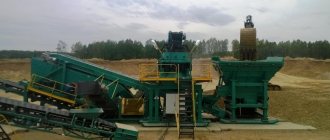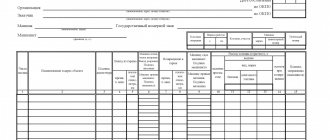Professional programmer standard: what is its content
The order of the Ministry of Labor of the Russian Federation dated November 18, 2013, number 679n, announced the basic working standards for programmers, allowing them to qualify their level and classify the list of functional responsibilities.
The regulatory document includes the following subsections:
- General information.
- Description of types of work.
- Analysis of functional responsibilities.
- Imprint about the developers.
General Information section introduces the concept of the specifics of work, and also lists the nature of economic activity. In addition, this section indicates the purpose pursued by the employee in this position.
The Descriptions of types of section provides generalized information about the employee’s functionality. Each duty is described in as much detail as possible. Each skill level, according to the contents of this section, corresponds to a specific code.
The Analysis of Functional Responsibilities section expands information about the programmer's responsibilities. And here is a detailed list of criteria for the position.
Output section reflects information about all individuals who submitted the professional standard of a software engineer to the Ministry of Labor.
The professional standard provides grounds for the rational distribution of responsibilities between employees. In addition, with the help of this document, the distribution of functional responsibilities becomes more reasoned and logical.
The meticulous study of this issue by the Ministry’s employees is explained by the fact that currently software is of fundamental importance for the full-fledged conduct of business in a company and in any production.
Only a highly qualified specialist who meets the standard approved by the Ministry is able to eliminate software failures or generate a new program to optimize production or personnel tasks.
Thus, total management control over the performance of functionality by employees directly related to software maintenance is dictated by production needs.
Professional standard “Digital printing equipment operator”
APPROVED by order of the Ministry of Labor and Social Protection of the Russian Federation dated March 16, 2020 N 152n
Digital printing equipment operator
Content
I. General information
II. Description of labor functions included in the professional standard (functional map of the type of professional activity)
III. Characteristics of generalized labor functions
3.1. Generalized labor function “Maintenance of digital printing equipment in preparation for work and upon completion of the job”
3.2. Generalized labor function “Printing on digital printing equipment”
IV. Information about the organizations that developed the professional standard
I. General information
Applying images to printed material using digital printing equipment
(name of type of professional activity)
The main goal of the type of professional activity:
Replication of text and visual information using equipment
Process control technicians (operators) not included in other groups
Other types of printing activities
Other technical control, testing and analysis activities
(name of type of economic activity)
II. Description of labor functions included in the professional standard (functional map of the type of professional activity)
Generalized labor functions
level (sublevel) of qualification
Maintenance of digital printing equipment in preparation for work and after completion
Preparation of materials for performing work on digital printing equipment
Technological and technical preparation of digital printing equipment for printing a job
Preparing for operation the wiring system of the printed material of digital printing equipment (with sheet or roll feed)
Preventive maintenance of digital printing equipment
Maintenance of digital printing equipment after completion of work
Printing on digital printing equipment
Uploading files to the digital printing equipment management system
Printing circulation on digital printing equipment
III. Characteristics of generalized labor functions
3.1. Generalized labor function
Maintenance of digital printing equipment in preparation for work and after completion of the job
Origin of the generalized labor function
Borrowed from the original
Professional standard registration number
Possible names of positions, professions
Digital printing equipment operator
Education and Training Requirements
Secondary vocational education - training programs for skilled workers (employees)
Requirements for practical work experience
Special conditions for permission to work
Name of the basic group, position (profession) or specialty
Digital Print Operator
Operator of automatic and semi-automatic lines of machines and installations
Master of Printing
3.1.1. Labor function
Preparation of materials for performing work on digital printing equipment
Level (sub-level) of qualification
Origin of the labor function
Borrowed from the original
Professional standard registration number
Checking the climate conditions in the room with digital printing equipment
Preparing the work area for receiving materials necessary to perform work on digital printing equipment
Checking the availability and serviceability of technological equipment, tools and accessories of digital printing equipment necessary to complete the job
Checking that the consumables required to perform work on digital printing equipment meet the job requirements
Determine the temperature and humidity in a room with digital printing equipment
Determine the type and characteristics of consumables used for digital printing
Assess the compliance of toners/inks used in digital printing equipment with the technical requirements of the job
Load toners/ink into digital printing equipment
Identify defects in consumables used to complete a job on digital printing equipment
Requirements for climatic conditions in the room with digital printing equipment
Types, types and formats of printed materials used for digital printing, and technical requirements for them
Types and properties of toners/inks used for digital printing and technical requirements for them
Features of the interaction of toner/ink with printed materials used for digital printing
Rules for preparing for use consumables used in the printing process
Professional terminology in the field of digital printing equipment and technology
Requirements for labor protection, industrial sanitation, electrical safety and fire safety
3.1.2. Labor function
Technological and technical preparation of digital printing equipment for printing a job
Level (sub-level) of qualification
Origin of the labor function
Borrowed from the original
Professional standard registration number
Checking the condition and preparing for operation of components and systems of digital printing equipment
Checking the status of the toner/ink supply systems of digital printing equipment for the job
Monitoring the settings of printing devices and sections of digital printing equipment to complete the job
Charging print material into digital printing equipment wiring system
Assess the serviceability of printing devices and sections of digital printing equipment
Configure toner/ink supply systems of digital printing equipment according to the job
Charge printed material into digital printing equipment
Choose a method for troubleshooting in the process of preparing components and systems of digital printing equipment for operation
Analyze the work situation regarding the technological and technical preparation of equipment to complete the task
Design and technical characteristics of digital printing equipment
Rules for preparing digital printing equipment for operation
Technological operating modes of digital printing equipment
Types and formats of printed materials used for digital printing
Types and properties of toners/inks used for digital printing
Professional terminology in the field of digital printing equipment and technology
Requirements for labor protection, industrial sanitation, electrical safety and fire safety
Professional criteria applied, according to the professional standard of a programmer, to different positions
Any functional responsibility of a programmer must correspond to the list of job titles. Qualification criteria, according to this provision, are presented to someone specifically from the staff, but not to the position as a whole. This led to the fact that the professional standard defines its own functional responsibilities for different positions.
In particular, the list states the following:
- Junior programmer (or software technician). When applying for this position, you must provide documentary evidence of your secondary vocational education. It is advisable to know the basics of programming and have computer literacy at the user level.
- Programmer. Secondary vocational education is mandatory. Upon taking up a position, it is necessary to confirm professional experience for six months in the field of adjustment and software development.
- Senior programmer (or software engineer). Secondary vocational education, which has documentary evidence, is mandatory, and presence in the profession must be at least 12 months.
- Lead programmer (or lead software engineer). Must present a higher education diploma upon taking office. If present in a given professional industry, the experience must be calculated at three years.
Compliance with the listed criteria is mandatory for management when hiring employees.
Their functional responsibility will be to ensure the uninterrupted functioning of the software, the formation of communication systems and methods of storing corporate information. Therefore, the lack of proper experience or a document on specialized education is an indisputable circumstance for refusal to hire.
Regulation of the scope of professional standards
In 2015, with the adoption of No. 122-FZ, the procedure for the widespread introduction of standards for professions in all sectors of the economy was begun. Partially this implementation took place on a mandatory basis, and partially on a voluntary basis. Regulatory basis for mandatory implementation:
- Article 195.3 of the Labor Code, which establishes the need for professional standards for positions with qualification requirements that are prescribed by law.
- Article 57 of the Labor Code established that professional standards are necessary for professions that have legislative benefits or restrictions.
- Government Decree No. 584 established the mandatory nature of professional standards for government agencies and companies.
In other cases not mentioned in these documents, in accordance with Part 2 of Art. 195.3 of the Labor Code, the employer is recommended to use professional standards as a basis for determining the parameters of personnel qualifications. Additionally, their use allows you to achieve the following goals:
- Put things in order in labor documentation, which is not only useful from the point of view of document flow, but also helps reduce the likelihood of disputes with authorities checking the correctness of documents (PFR, Social Insurance Fund, etc.).
- Conduct personnel assessment and subsequent recertification.
- Create a comprehensive system of criteria that both current employees and job applicants must meet.
- Require some staff to undergo retraining and receive additional education.
Attention! To achieve these goals, the employer can also use the EKS and ETKS job classifiers. He himself has the right to choose his preferred document.
Functional responsibilities of a programmer according to the professional standard
According to the professional standard for a software engineer, an employee responsible for software development is charged with four main job functions.
Based on them, the employee is responsible for:
- for examination of program code;
- for eliminating the slightest malfunctions in its functioning;
- for the development of new program code (if such a need arose in production);
- for the development of corporate requirements for software (these requirements must be specified for personnel at different levels);
- for software design.
According to the professional standard, an employee must be able to integrate software modules and carry out high-quality verification of the proposed product.
New products are constantly appearing on the digital technology market. In this regard, a qualified programmer must be able to update them.
Established requirements according to the document
The general work function of a programmer includes several types of activities defined by the corresponding positions. Each has its own requirements for a specialist.
Junior Specialist
For such work, a diploma of secondary specialized education is required. No professional experience required.
The specialist needs to know:
- ways to formalize the task;
- mechanisms for building solution algorithms;
- programs for visual representation of algorithms;
- methodology for solving typical problems in this area;
- source code creation tools;
- a technique for improving code readability.
Programmer
A specialist of this level must have a specialized secondary or higher education . Candidates who have worked in the field of software development for more than six months are appointed to this position.
The specialist needs to know:
- methods of automatic testing of programs;
- software diagnostic mechanisms;
- integrated development environments;
- methods for obtaining numerical values of various software properties;
- organization of program evaluation;
- programming languages.
Senior
A mandatory requirement is to have a higher specialized education. The employee must have worked in this field for more than a year.
The specialist needs to know:
- methodology for combining modules and components;
- mechanisms for interaction between software and the user and equipment;
- software deployment processes;
- data processing methods;
- programming languages.
Leading
This position can be filled by professionals with 3 years or more of experience in programming. Higher education is required.
The specialist needs to know:
- functionality of the current software and hardware environment;
- basic development tools and their capabilities;
- methodology for designing and creating software;
- database creation technology.
Programmer's functional map
The map includes the following works:
- Development and debugging of program code (relevant for qualification level 3). It is carried out using algorithmization of assigned tasks. Involves the use of programming languages and manipulation of profile data.
- Checking the functionality of the software code (relevant for qualification level 4). Involves performing the following functional responsibilities: correcting dysfunction in the master database, refactoring program code, developing a set of professional measures to check the functionality of the software.
- Integration of software modules and verification of a new product in order to adapt to the interests of the company (relevant for qualification level 5). Includes functional responsibilities: work on integrating software modules, verification of software products offered by the market.
- Development of software requirements (relevant for qualification level 6). Includes the following type of work: examination of the functionality of the software and the requirements for it; finalization of software components by creating technical specifications for them; design of stand-alone software adapted to production requirements.
Job description of a programmer - sample 2020 and how to draw it up, rights and responsibilities
The profession of a programmer is one of the most popular and highly paid in the global labor market. In order not to lose its value in this constantly evolving field, the specialty requires constant learning and very rapid adaptation.
The job description of a programmer allows you to regulate the work process at the enterprise, clearly delineating the responsibilities of the employee. The specialist must have an analytical mind, systems thinking and good memory.
How to compose: general provisions
A job description is necessary to determine the functional responsibilities, rights and responsibilities of an employee. In the “General Provisions” section, the employer indicates information about the category, education and qualification requirements for the professional standard of the position.
The programmer belongs to the category of specialists, reports to the department manager, and is appointed and dismissed by order of the general director of the enterprise. A person must have a higher professional education.
The employee must know:
- programming languages;
- methods of classification and coding of information;
- standards for number systems, codes and ciphers;
- rules and algorithms for creating test data sets;
- diagnostics and correction of typical errors that arise during software development;
- characteristics, features, purpose and operating rules of a computer;
- types of software and storage media;
- automatic information processing technology;
- fundamentals of management, economics, production and labor legislation;
- procedure for preparing technical documentation;
- labor protection standards, safety regulations and internal labor regulations.
In his activities, the programmer must be guided by the legislation of the Russian Federation, the Charter of the enterprise, management orders and corporate standards.
Job responsibilities: what a programmer is entitled to and his responsibilities
The following section should list the employee’s main job functions:
- software development and testing;
- optimization of program code;
- choosing a programming language to describe algorithms;
- assessing the compliance of the required software characteristics;
- program development and support of software products;
- correcting errors and shortcomings of the written program;
- implementation of a system for checking the correctness of programs;
- meeting deadlines for assigned tasks;
- maintaining order and cleanliness in the assigned territory.
In addition, the job description should indicate the employee’s rights enshrined in the labor legislation of the Russian Federation and provided for in the collective agreement of the enterprise.
Thus, the programmer has the right to take part in the discussion of projects together with management, demand assistance in the performance of his duties, request the necessary information and involve other employees in solving assigned tasks (in agreement with the manager).
A separate paragraph should state what actions the programmer is responsible for, for example, for:
- causing damage to the enterprise;
- violation of internal regulations;
- negligent performance of one's official duties;
- disclosure of information located in the enterprise database.
Responsibility, depending on the misconduct, can be administrative, disciplinary and criminal.
Typical (taking into account the professional standard)
You can find a typical programmer's instructions here: https://yadi.sk/i/7H3EEkpD3TmgzS
Software engineer
The job description of a software engineer might look like this:
- at school: https://yadi.sk/i/mag64Wba3TmhBt
- CNC machines: https://yadi.sk/d/4t2aH3WX3TmhJg
- at the enterprise: https://yadi.sk/d/gTxfuD4J3TmhSt
Programming technician
To find instructions for a programming technician, click here: https://yadi.sk/d/YpgQpMnA3TmhXH
Budgetary institution
In budgetary institutions (including schools), instructions of the following type are used: https://yadi.sk/i/KOZXMvvn3TmhdZ
1C
We have placed a sample instruction for a 1C programmer at the following address: https://yadi.sk/d/NCCIsKzy3Tmhhw
Presenter
The functionality of a lead programmer differs from the responsibilities of an ordinary employee, therefore the job description looks different: https://yadi.sk/i/PxJicVe_3Tmhnc
Web programmer
For web programmers, the following instructions are used: https://yadi.sk/i/yUgK50vy3Tmhrb
So, a correctly drawn up job description according to the professional standard “Programmer” must comply with the design rules adopted in business, but at the same time it may have its own nuances and differences associated with the specifics of the enterprise.
Source: https://specworkgid.ru/baza-znanij/info/dokumenty/obrazcy-instrukcij/dolzhnostnye/programmista.html
Professional standard for working with personnel: unification and algorithmization
When hiring a programmer, the employer, in its own interests, must check whether the job applicant meets the qualification requirements. When drawing up the staffing table, the uniformity of requirements for all programmers is taken into account.
Developers of the professional standard programmer: 1C, MESI. The standard is recommended for use by employers and those responsible for personnel selection. This is a convenient HR policy tool. Its advantages are that it allows you to automate management processes. Its use makes job descriptions as clear and accessible as possible.
In addition, the professional standard is a modern tool for quickly carrying out tariff work and assigning qualification categories to employees. All work with personnel using the programmer’s professional standard is unified, which ensures maximum objectivity in terms of management’s assessments of the staff’s job qualities.
When the question arises about entrusting a position to a programmer, management's decision should be focused on professional standards. It is in accordance with it that job descriptions are written and functional responsibilities are approved.
Commodity professional standard operator
Independently determine the tasks of professional and personal development, engage in self-education, and consciously plan professional development. Installation and basic settings of the operating system, peripheral devices, local area network. Website development using modern hypertext markup languages.
Work on vocational training is carried out targeted in all municipalities of the Upper Volga region. Representatives of the employment service advise employers on participation in the activities of the national project. Distance learning technology is widely used in organizing courses.
Thus, one of the residents of the city of Bryansk worked as a teacher in a kindergarten before going on maternity leave.
The Yamovs have been working at the Chelyabinsk Electric Locomotive Repair Plant for several years (Larisa is a storekeeper, Evgeniy is a carpenter) and are making their region greener and more beautiful. Over the past year, the two of them (!) planted almost 2 thousand seedlings in the Chelyabinsk region - oaks, cedars, pine and others. This year in the spring - another thousand, having managed to attract residents of the nearest village with plantings.
Organize your own activities, determine methods and means of performing professional tasks, evaluate their effectiveness and quality.
In 2020, the school became a branch of the Uyarsky Agricultural College. Alexander Vladimirovich Shultz was appointed head of the branch.
DECISION of the Ministry of Labor of the Russian Federation dated 10-11-92 31 (as amended on 04-02-97) ON APPROVAL OF TARIFF AND QUALIFICATION CHARACTERISTICS FOR...
After the completion of the open voting, voting will begin by the expert council, which will include government representatives, public figures, theater and film stars, and leading media. The results will be summed up and the award will be presented in Moscow.
How often is a computer operator needed?
In modern times, most enterprises and organizations are equipped with computers. Many production processes are automated and computerized. Having the necessary work experience and the desire to develop at work, finding a vacancy and getting a job as a computer specialist in 2020 will not be difficult:
- Employees of the economic department of an enterprise cannot do without an operator. The employee knows how to fill out an Excel document and use formulas.
- Large shopping centers, cafes, and establishments selling fast food products can boast of experienced professionals working with computers. Sellers and storekeepers are hired more willingly if they know the basics of the operator's specialty.
- MASS MEDIA.
- A secretary who is technically literate and knows how to operate office equipment. The average level of PC proficiency is just about a computer operator.
What should an experienced computer operator be like?
Having graduated from college or lyceum, many young professionals are faced with a common problem when finding a job - they know the theory, but lack practical skills. Seeing the employee’s potential, large enterprises in 2020 offer free training courses or courses for a nominal fee. Upon completion, the worker is tested.
Having assessed the student’s knowledge and efforts, the supervisor makes a decision whether to hire him or not. After completing the training, the likelihood of finding a job increases significantly, because now the specialist has the skills that every employer wants to see in him.
- A PC operator knows how to make photocopies using office equipment.
- Types text easily and quickly, knows how to format and structure it (break it into columns, set paragraphs, make lists).
- At the request of accounting employees, fills out accounting reporting forms.
- Has knowledge of how to use e-mail.
- Able to print documents.
- Monitors the operation of the printer, fax, scanner, and can troubleshoot minor equipment malfunctions.
In the media, a PC specialist is required to have knowledge of working with graphic information. For example, in a printed publication, the readers’ perception of the text depends on how correctly photographs and other graphic elements are positioned.
Basic requirements for a PC operator
Yaroslavl Electric Locomotive Repair Plant - father of six children. Mikhail and his wife took three of them from an orphanage.
The computer operator must be able to work with the Word text editor, know its characteristics and purpose, as well as the main elements of the on-screen interface. The purpose, capabilities and principles of working with an Excel spreadsheet are also within the scope of the operator's work.
If the work of a PC operator involves any additional job functions (formation of documents, data analysis, etc.), work experience from 1 to 3 years may be required.
Observe labor discipline, safety precautions and comply with internal regulations established in the company.
If the work of a PC operator involves any additional job functions (formation of documents, data analysis, etc.), work experience from 1 to 3 years may be required.
Having become a highly qualified computer operator, you can find work in this profile in almost any organization and at any enterprise.











